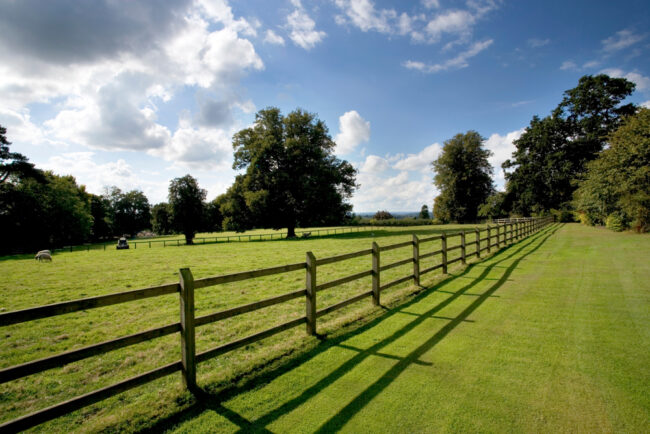How deep do fence posts need to be in Ontario? Installing posts is not just a simple matter of digging a hole and sticking them in — it’s a crucial step that can make or break your fence’s stability and longevity. It’s important to install your fence posts properly because not doing so can have drastic consequences. This guide offers all you need to know.
Key Takeaways
- You need to research local laws before you begin building your fence
- Posts that are too shallow threaten the structural integrity of your fence
- Uneven terrain can pose a challenge to your fence installation
Legal Requirements for Fence Posts in Ontario
There are no official legal requirements for fence post depth in Ontario, but local laws may require your posts to be at least a certain depth. Before installing your fence, check the local ordinances to ensure you’re in compliance. If you hire someone to install your fence for you, they should have the knowledge to comply with the laws that apply to your area.
Other rules you need to keep in mind are those which regulate what types of materials you’re allowed to use, how tall your fences may be, whether they obstruct traffic and how to handle fences surrounding pools. For example, in Ottawa, you must check the fence by-laws online or call the municipality for more information.
How Deep Do Metal Fence Posts Need to Be?
The depth of your posts may vary depending on how tall you plan to make your fence. Metal fence posts come in a wide variety of styles, so the best way to tell how far to place them underground is to take one-third to one-half the posts’ height above ground. Some people recommend going at least three and a half feet below ground regardless of height because this is lower than the frost line.
How Deep Do Wooden Fence Posts Need to Be?
Wooden fence posts would follow similar rules, but you want to take extra steps to protect your material from water damage and erosion. Many fence installation experts recommend filling the bottom of your post holes with gravel to reduce the amount of water the posts are exposed to. This can add years to your fence’s life.
How Deep Do Chain-Link Fence Posts Need to Be?
Chain-link fences are much shorter than wooden or metal fences most of the time. For example, a wooden fence might be eight feet tall, while chain-link fences rarely rise more than six feet. Using the above rules would suggest you’d only need to place your posts two feet underground. However, most people choose to play it safe and install chain-link fence posts at least three feet underground.
What Happens if My Fence Posts Aren’t Deep Enough?
Many things could go wrong if your posts aren’t installed deep enough into the ground. One reason that experts recommend putting them below the frost line is that your posts could come out of the ground in the spring after a harsh winter. The soil beneath the frost line is far more stable than the topsoil, which is prone to shifting.
Snow and frost aren’t the only issues to consider, however. Violent storms that carry strong winds behind them can wreak havoc on shallow fence posts. People lose their fences during stormy weather when posts lack stability and depth.
Digging holes to the right depth isn’t the only step you need to take to secure your fence. You can add gravel to the bottom of your holes, but the best way to ensure your structure won’t go anywhere is to fill the gaps with concrete after positioning your posts.
Concrete adds weight, holding the posts down during windy weather and changing seasons.
Does Terrain Matter?
Different terrain types impact fence installations. The most common problem people encounter is when attempting to install a fence in an area with sloped terrain. The slopes can make it challenging to install the structure because each post winds up at a different height in the ground. It’s also difficult to connect the components of the fence that are above ground when the posts aren’t aligned.
Fortunately, there are different types of fences available that can work on steeper graded slopes, like chain link fences. However, the best solution is to attempt to level the ground before you install it. This eliminates the issue entirely.
If the ground has very minor slopes, bumps or inconsistencies, you can resolve the issue by putting some posts a little deeper into the ground than others so that they all end at the same height.
Fence Installations by the Professionals
Getting the right post depth can be tricky when doing it on your own. That’s why hiring professionals to do it for you could be more cost and time-effective. Contact us at Ideal Fence today to learn more about our installation process and fence options.

